
| Pale Cup Moth (previously known as Pelora pinguis LIMACODIDAE, ZYGAENOIDEA | (donherbisonevans@yahoo.com) and Stella Crossley |
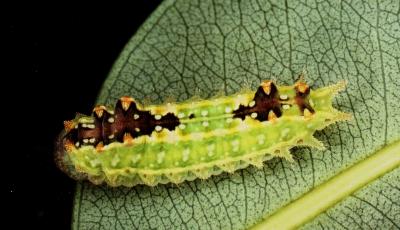
early instar
(Photo: courtesy of Merlin Crossley, Melbourne, Victoria)

| Pale Cup Moth (previously known as Pelora pinguis LIMACODIDAE, ZYGAENOIDEA | (donherbisonevans@yahoo.com) and Stella Crossley |

early instar
(Photo: courtesy of Merlin Crossley, Melbourne, Victoria)
These Caterpillars sting. The caterpillar is green, and it has two dorsal shields and a skirt of fleshy spikes, including two fleshy spikes on the tail. The head is pale brown, and often held curled under the prothorax.
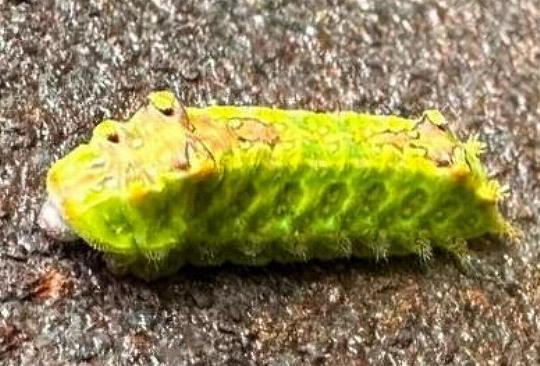
The shields vary from being black to pale brown. The front one is larger than that at the rear, and the rear shield is split. Each dorsal shield bears four tubercles containing orange evertable stinging hairs.
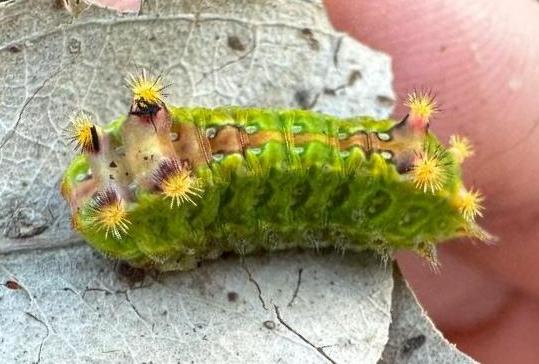
The shields are narrower and flatter than in other Doratifera species. Also the presence of a longitudinal yellow line above the lateral spikes distinguishes this species.
The caterpillar moves like a slug because its legs are reduced, which is typical of many Doratifera larvae.
The caterpillars feed on:

The caterpillar grows to length of about 3 cms. It pupates in a hard brown ovoid cocoon stuck sideways onto a twig. The cocoon has a diameter of about 1 cm.
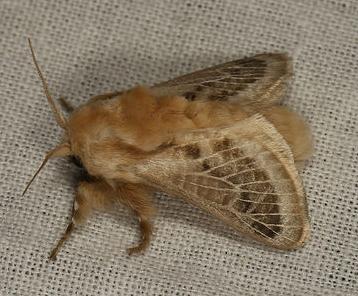
The adult male and female moths are similar in appearance but not in size. They have broad wings and stout bodies like many Cup Moths. They are pale brown with white scales on the thorax and on the marginal area of each forewing. A double row of subterminal brown spots merge near the apex of each fore wing, separating the pale termen from the rest of the wing.
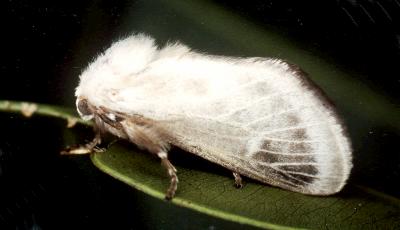
The males have a wingspan of about 3 cms. The females have a wingspan of about 4 cms.
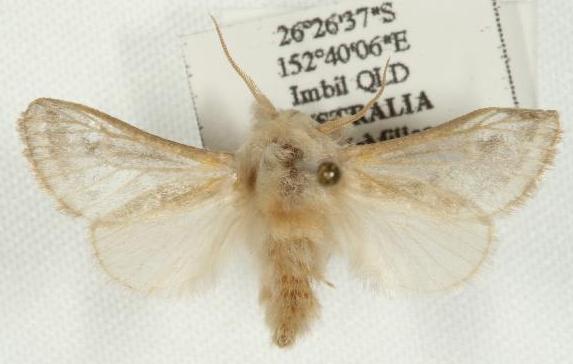
Eggs laid in December in Melbourne hatched after 11 days.
The species occurs over the whole eastern seaboard of Australia, including:
Further reading :
Ian F.B. Common,
Moths of Australia,
Melbourne University Press, 1990, fig 29.4, p. 302.
Buck Richardson,
Tropical Queensland Wildlife from Dusk to Dawn Science and Art,
LeapFrogOz, Kuranda, 2015, p. 104.
Francis Walker,
Catalogue of Lepidoptera Heterocera,
List of the Specimens of Lepidopterous Insects in the Collection of the British Museum,
Part 5 (1855), pp. 1119-1120, No. 2.
 caterpillar |  butterflies |  Lepidoptera |  moths |  caterpillar |
(updated 15 February 2010, 20 September 2024)